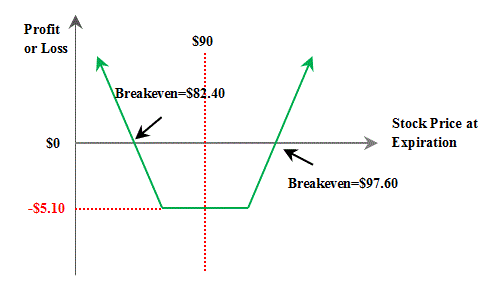Strap - Buy TWO Strike Calls, Buy ONE Strike Put.
- An adjustment strategy to Straddle , buying one more Call..
Strategies...
- Buy TWO Strike Calls (ATM)
- Buy ONE Strike Put (ATM) with same expiration.
- Strap is more expensive than straddle,only do strip when there is a big jump in stock price.
- Make profit with stock price moving in either direction, preferably to the upside movement.
- Limited downside risk, uncapped upside potential profit.
Example...
Oracle Corporation (NASDAQ:ORCL) is traded at $26.30 on May, 2012. To do a Strap, you
- Buy TWO Sept 2012 $26 Calls at $2.00.
- Buy ONE Sept 2012 $26 Put at $1.70.
 | |
| Long Strap |
 |
| Long Strap |
Advantages...
- Profit from volatile stock's movement, preferably upside move.
- Uncapped potential profit
Disadvantages...
- Expensive - Buy TWO Calls & ONE Put (ATM)
- Significant movement of stock to cover all costs.
- Time decay accelerates as options close to expiration.
Maximum Profit: Uncapped Profit
Maximum Loss: $2.00 + $2.00 + $1.70 = $5.70
(Two Call Premium + One Put Premium)
Breakeven Up: $26.00 + $2.85 = $28.85
(Strike Price + half Premium Paid)
Breakeven Down: $26.00 - $5.70 = $20.30
(Strike Price - Premium Paid)

























